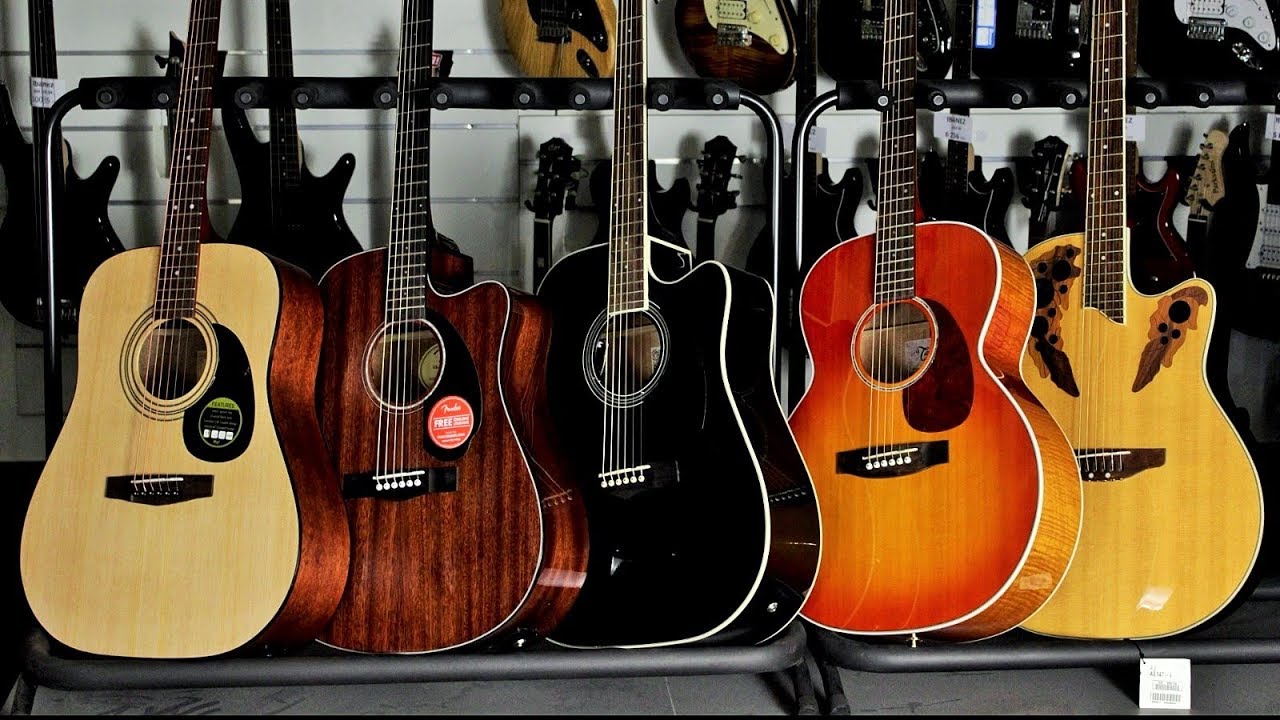Contents
There seems to be no end to the question and comparison between acoustic vs acoustic-electric guitar. Do you think it’s really that hard to pick a guitar? Well, the answer depends on how much you know about these types of guitars and the kind of music you want to play. So, to ready yourself for the more serious discussion ahead, get to know what is acoustic and acoustic-electric guitar.
What is Acoustic Guitar?
Perhaps, there’s no need to give much explanation about acoustic guitar, because everyone of us sees it and knows what it is. It’s a distant cousin of the electric guitar. If it’s not electric, it’s an acoustic guitar – that’s it!
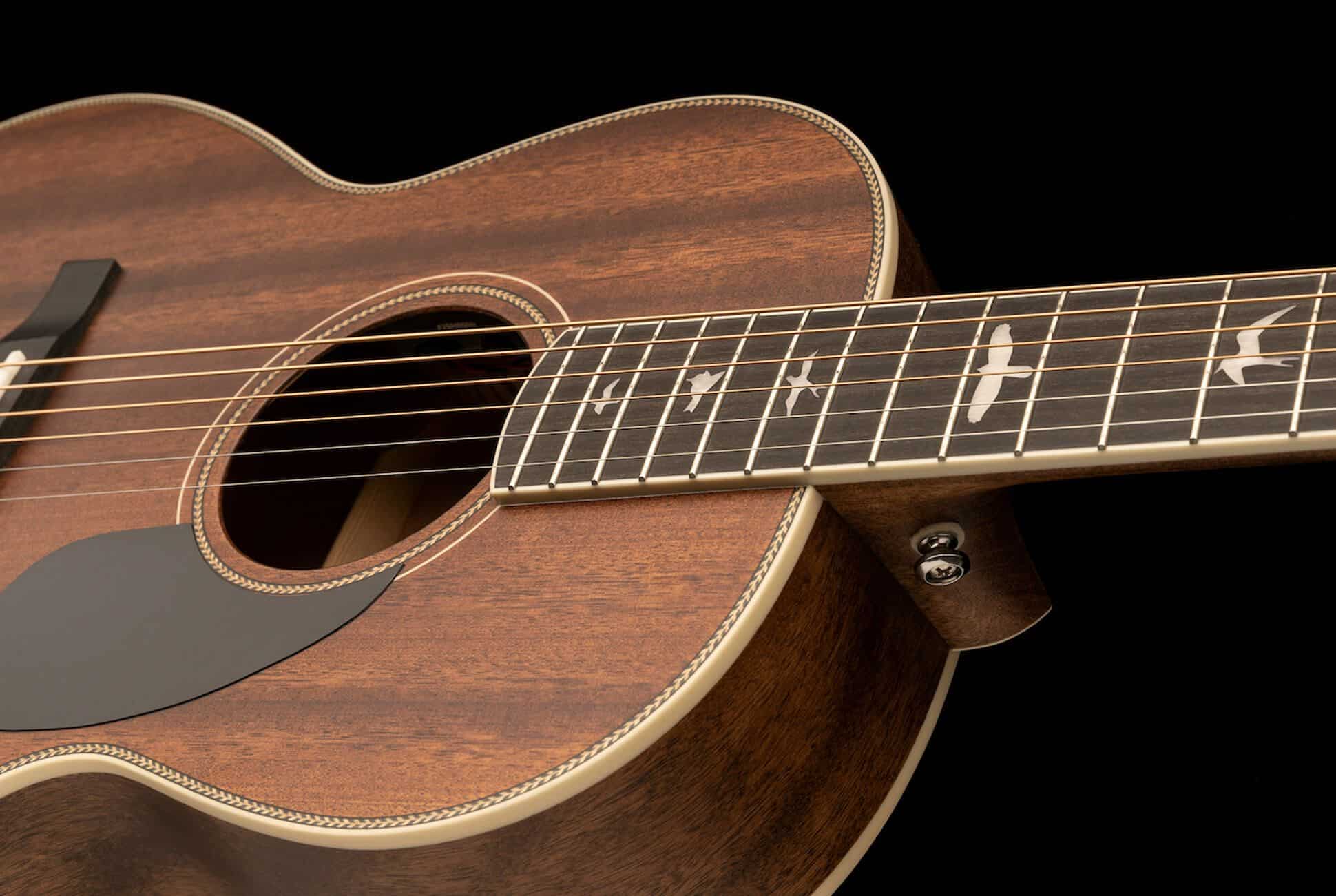
However, for the sake of comparison, it’s important to enumerate the things acoustic guitars have and don’t have. Unlike electric guitars, acoustic guitars don’t have amplification through onboard electronics. It sounds natural – you can’t add effects to the sounds coming out of an acoustic guitar.
What is Acoustic-electric Guitar?
Also known as electro-acoustic guitar, is an acoustic guitar with electronics onboard. This means, it still has the body of the regular acoustic guitar, but it has added pickup and preamp (usually with EQ and volume controls.)
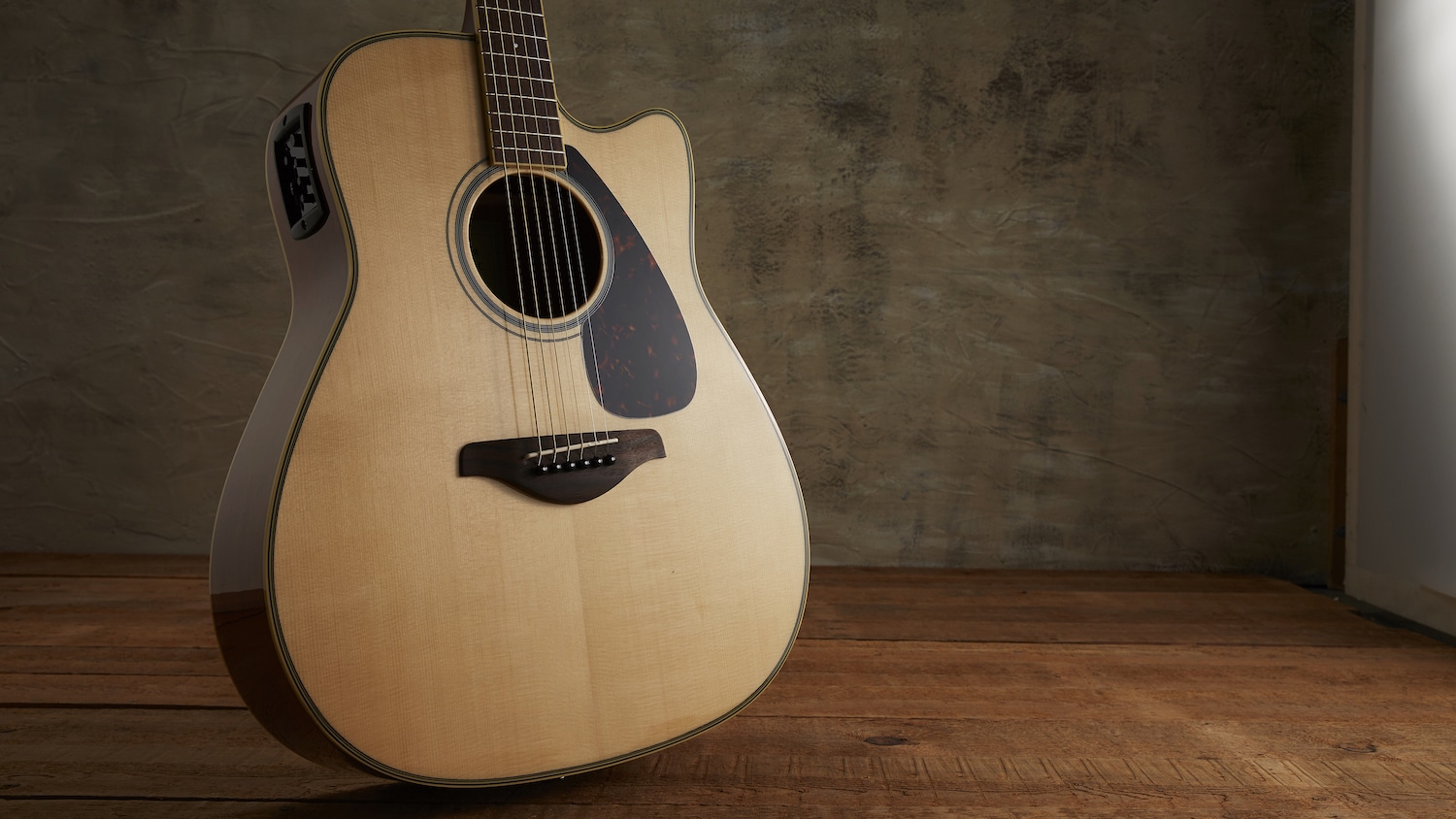
Since it has a pickup, you can easily connect it to your amp for sound amplification, of course. Since you can easily drive acoustic-electric to other devices like mixer and your PA system, it’s more preferable for live performances. The good thing about acoustic-electric is that, they can be played with or without an amp.
Similarities & Differences
Part of the similarities and differences of these two types of guitar has been briefly discussed previously. But it seems like there is a need for a much deeper discussion for you to be able to come up with the best choice.
The Looks
The first criteria in choosing your next guitar – check the looks. In this aspect, both acoustic and acoustic-electric guitars are made out of tonewoods and finish. If not with the additional controls onboard, it’s hard to distinguish these two. Common tonewoods for acoustic guitars include spruce, soft maple, mahogany, and sometimes basswood for cheap guitars.
Size and Shape
Acoustic and acoustic-electric guitars can have the same shape and size, as well as how it’s designed to give you comfort. When you go for regular acoustic guitar, you might consider the size as it influences the sound it projects.
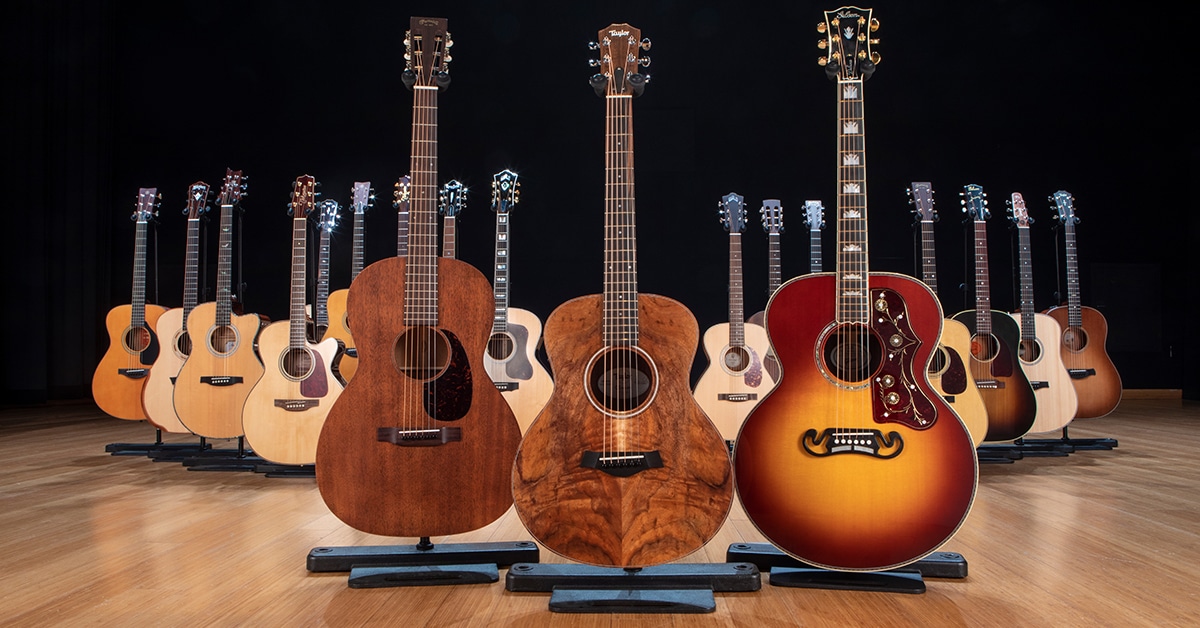
If you want to get acoustic-electric, a small guitar may have a big sound because of the pickup and controls onboard. However, if you need to play acoustic for most times, size and shape will again matter, so you can get the best sound from your guitar.
Playability & Versatility
Most beginners leaned towards getting acoustic guitars because it’s usually the easiest to learn. Some acoustic guitars have nylon strings – basically not that torturing to the fingertips of newbies. Otherwise, beginners will also opt to get electric guitar because it seems very effortless to play – you don’t need to push the strings down harder.

You can actually have both with an acoustic-electric guitar. You can play acoustic when unplugged, yet you can also play loud when you plug it into an amp. No need for setting up the microphone in front of the guitar or installing a separate pickup. It has all the necessary electronics onboard. If you need to play loud, all you got to do is plug it into your amp and turn the volume up.
Portability
Whether you go jamming with friends at the beach or perform at a local community event, the acoustic-electric guitar will come in handy. Yet, because acoustic-electric relied on electronics for the volume, it might not as loud as acoustic guitars when unplugged. If you’re an always-on-the-go kind of person, and you want to take your instrument with you anywhere, get an acoustic guitar.
Price
Since you get more controls and other things in your acoustic-electric guitars, they tend to be more expensive than the acoustic. This is, of course, if you get your guitar in package because you need to pay extra for the extra features that you get. But, if you need to buy all the materials separately, then, it’s a different story.
If you are fortunate enough, you can actually find some deals wherein the price difference between acoustic and acoustic-electric is just a infinitesimal. Still, you need to spend additional money on the equipment you need and on the additional features that you will soon be enjoying. Here’s a YouTube video that’ll help you get to know more about the difference between these two, and their price.
Pros & Cons
Acoustic Guitar
Pros
- Good sound and volume when it’s unplugged
- Very handy, you can play wherever and whenever
- No need of add-ons, cheaper than acoustic-electric
Cons
- Need mic or pickup to amplify
- You need to pick the right size and shape
Acoustic-Electric Guitar
Pros
- Can amplify sound without putting mic or pickup
- Has controls, giving more tone options
- Can be played unplugged like regular acoustic guitar
Cons
- More expensive because of the add-ons
- Not as good as traditional acoustic when unplugged
Beginner’s Choice?
Both have strengths and weaknesses. So, it boils down to the preference of a beginner. Are you planning to play for the crowd, or just want to learn to play at home? Do you need to drive it to the amp, or you don’t want to make some intolerable noise at home? Are you hanging out with your friends often, or you’re just keeping the guitar at home?
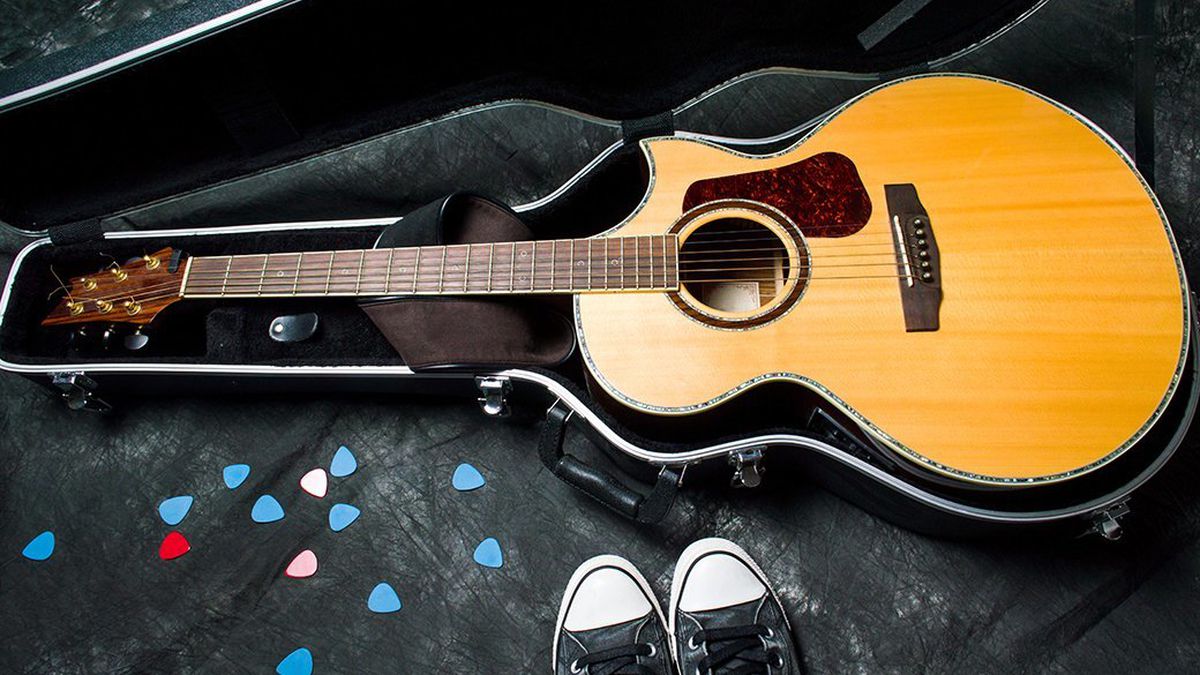
There are just a few questions you must ask yourself before buying a new guitar. Acoustic and acoustic-electric, even electric guitar, can help you hone yourself if you have the discipline to practice. After all, it’s not all about how great your instrument is, but about your willingness to practice and learn guitar.
Conclusion
Ever since, acoustic vs acoustic-electric comparison is a long discussion. Some recommend acoustic because it’s good-sounding and cheaper, while others suggest acoustic-electric for versatility. However, the bottom line should be the preference of the person.
Everything has been covered in this article, including the pros and cons of acoustic and acoustic-electric. Therefore, it’s now your time to choose. There’s no right or wrong instrument – just a beginner eager to play guitar.

Hi music fan! I am Jeff. Hope that you enjoy some stuff I shared here in my personal blog.
About myself, Currently I am in charging as Artist Manager/Music Supervisor at 72 Music Management. I did managed album to Grammy Award in 2017 with 7 Nominations from 2014-2020 and had the opportunities to work with : A.J. Croce, Blind Boys of Alabama, Bobby Rush, Dom Flemons, Dustbowl Revival, Sarah Grace
Governor of the Memphis Chapter of The Recording Academy is one of a award that I am lucky to achieved.
